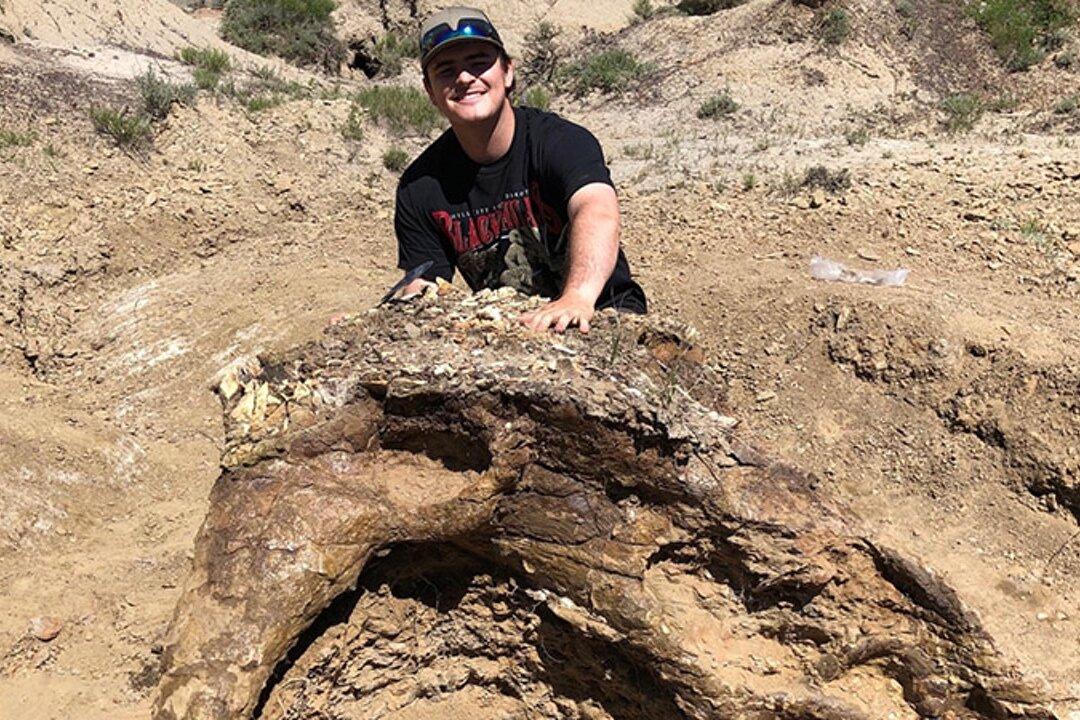A University of California student has discovered a 65 million-year-old dinosaur skull in a remote area of North Dakota.
Harrison Duran, a fifth-year biology student at the University of California, Merced, unearthed the partial Triceratops skull on a recent paleontology dig, according to a July 24 press release.





